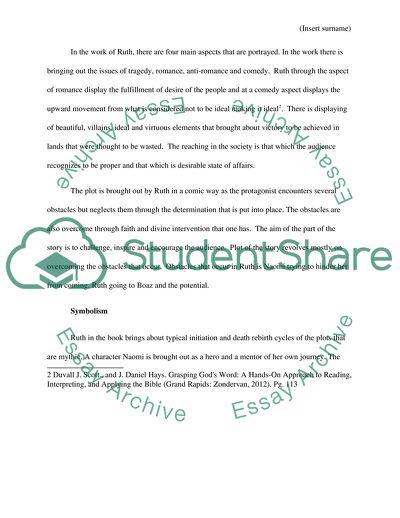Cite this document
(Narration of Ruth Literature review Example | Topics and Well Written Essays - 2500 words, n.d.)
Narration of Ruth Literature review Example | Topics and Well Written Essays - 2500 words. https://studentshare.org/religion-and-theology/1866796-comparative-essay-focusing-on-two-old-testament-narratives
Narration of Ruth Literature review Example | Topics and Well Written Essays - 2500 words. https://studentshare.org/religion-and-theology/1866796-comparative-essay-focusing-on-two-old-testament-narratives
(Narration of Ruth Literature Review Example | Topics and Well Written Essays - 2500 Words)
Narration of Ruth Literature Review Example | Topics and Well Written Essays - 2500 Words. https://studentshare.org/religion-and-theology/1866796-comparative-essay-focusing-on-two-old-testament-narratives.
Narration of Ruth Literature Review Example | Topics and Well Written Essays - 2500 Words. https://studentshare.org/religion-and-theology/1866796-comparative-essay-focusing-on-two-old-testament-narratives.
“Narration of Ruth Literature Review Example | Topics and Well Written Essays - 2500 Words”. https://studentshare.org/religion-and-theology/1866796-comparative-essay-focusing-on-two-old-testament-narratives.


